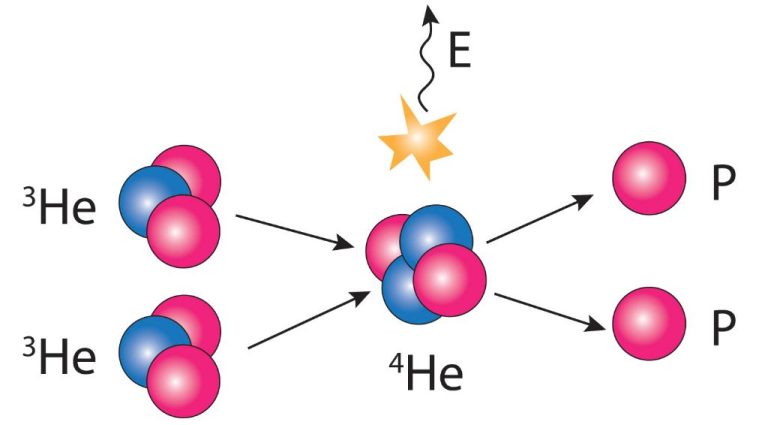Is Solar Energy A Good Energy?

Solar energy has emerged as a promising renewable energy source with significant environmental and economic benefits. The conversion of sunlight into electricity is achieved through the use of photovoltaic solar panels. However, solar energy also has some limitations.
The key thesis is that solar energy provides clean renewable power with minimal environmental impact and increasing cost savings, but also comes with challenges like intermittency that require additional solutions to maximize its potential.
What is solar energy and how does it work?
Solar energy is radiant energy emitted from the sun. The sun constantly emits solar energy in the form of electromagnetic radiation, which includes visible light, ultraviolet rays, and infrared rays [1]. On Earth, we can harness solar energy through solar technologies like photovoltaic panels, concentrated solar power plants, and solar heating systems.
Solar panels, also called photovoltaic (PV) panels, convert sunlight directly into electricity through the photovoltaic effect. PV cells are made of semiconducting materials, usually silicon. When sunlight hits the solar panel, the photons are absorbed by the semiconductor materials, causing electrons to break free of their atomic bonds. This generates an electric current as the freed electrons flow through the material to produce an electric circuit [2]. The electric current is then fed into the electrical grid for use or stored in batteries.
Therefore, photovoltaic panels generate clean, renewable electricity from sunlight. This electricity powers homes, buildings, and the grid without producing greenhouse gas emissions or other pollutants.
Environmental benefits
Solar energy has significant environmental advantages over fossil fuel-based energy. Unlike coal, natural gas, and oil, solar panels do not emit greenhouse gases or toxic pollutants when generating electricity. According to the U.S. Department of Energy, the widespread use of solar power in place of fossil fuels could prevent up to 885 million metric tons of greenhouse gas emissions per year in the United States alone (https://www.energy.gov/eere/solar/solar-energy-wildlife-and-environment). The emissions avoided are equivalent to taking over 185 million cars off the road.
Solar energy systems do not produce air pollutants, such as sulfur dioxide, nitrogen oxides, or particulate matter, which can cause smog, acid rain, and respiratory illness. Fossil fuel power plants are a major source of these pollutants, which damage the environment and public health. The Environmental Protection Agency estimates that transitioning to clean energy could prevent 52,000 premature deaths in the U.S. annually by 2030 (https://www.energysage.com/solar/health-environmental-benefits-of-solar-energy/). Solar energy helps create cleaner and healthier communities.
In addition, solar energy production requires far less water than fossil fuel power plants which rely heavily on water for cooling and steam generation. This preserves water resources, especially in arid regions. The development of solar power protects the environment and mitigates climate change through substantial reductions in emissions and pollution.
Economic benefits
Solar energy can provide significant economic benefits in terms of reducing electricity costs in the long run, creating jobs, and stimulating the economy. According to the Solar Energy Industries Association, solar energy prices have dropped over 70% in the last decade, making it increasingly competitive with conventional sources of electricity.
Once the initial investment in solar panels has been made, the source of electricity is free, resulting in long-term savings on electricity bills. Families and businesses in many parts of the country are now paying less for solar-generated electricity than for utility-provided power.
In addition to lowering costs for consumers, solar is creating employment opportunities in manufacturing, installation, and other areas. The solar industry currently employs over 250,000 workers in the U.S., representing the fastest growing occupation in America. Solar jobs increased 167% over the last decade, driven by strong demand for solar nationwide.
Local economies and tax bases benefit when solar energy replaces more expensive modes of electricity generation. Money that would have been sent out of state to buy fossil fuels can instead circulate locally and fund public services. The "The Economic & Environmental Impact of Solar Power" notes that every $1 million invested in solar creates about 20 jobs, so solar investments can give local economies a substantial boost.
Limitations
While solar energy has many benefits, it also comes with some limitations that need to be considered. Three main limitations of solar energy are:
High Upfront Costs
The initial cost of installing solar panels and related equipment like inverters and batteries can be quite high for homeowners and businesses. According to the Solar Energy Industries Association, the average cost of a residential solar system in the U.S. is around $2.80 per watt, which can equate to tens of thousands of dollars depending on the size of the system (1). While solar incentives and falling equipment prices are making solar more affordable, the upfront investment remains a barrier for many.
Intermittency Issues
A key disadvantage of solar energy is that it depends on sunlight to produce electricity. Solar panels do not generate energy at night, and energy output can be reduced on cloudy days or during storms. This intermittency can be paired with energy storage systems like batteries to provide power when the sun isn’t shining, but adding storage increases costs (2). Relying on solar as the sole energy source requires carefully managing energy consumption during periods of reduced solar generation.
Land Use
Ground-mounted solar arrays require significant land area. The land use footprint is much larger than other energy sources like natural gas or nuclear. While rooftop solar minimizes land use, large solar farms can face opposition due to using up valuable real estate. Careful solar site selection that avoids conflicts with agriculture, wildlife habitat, or other priorities is needed (3).
Solar energy storage solutions
One of the main challenges with solar energy is that it is an intermittent energy source, meaning solar panels only produce electricity when the sun is shining. Energy storage solutions help capture excess solar energy during the day for use at night or when solar panels are not actively generating electricity.
Batteries are the most common storage solution paired with solar photovoltaic systems. Lithium-ion batteries in particular have become popular for home solar energy storage due to their high efficiency and declining costs. Battery storage allows solar panel owners to store excess energy for later use. This provides backup power and can reduce reliance on the grid.
Thermal energy storage is often used with concentrated solar power systems. This involves heating a storage medium like molten salt during the day that can then generate steam to run turbines after sunset. Thermal storage provides an effective way to utilize solar heat energy when the sun is not shining.
Other emerging storage solutions include pumped hydro storage, compressed air storage, and flywheel storage. Continued declines in storage costs along with supporting policies will facilitate greater pairing of solar power with storage.
According to the Solar Energy Industries Association, the U.S. energy storage market more than doubled in 2021 to over 3.5 gigawatts. As storage technology improves and costs decline further, pairing solar with energy storage will become an increasingly attractive option for homeowners and utilities.
Sources:
https://www.energy.gov/eere/solar/solar-integration-solar-energy-and-storage-basics
https://www.seia.org/initiatives/solar-plus-storage
Solar Energy Policies and Incentives
Government subsidies and tax incentives have played a major role in the growth of solar energy in the United States. One of the most impactful policies is the federal solar Investment Tax Credit (ITC), which provides a 26% tax credit for systems installed in 2020-2022, and 22% for systems installed in 2023 [1]. Many states offer additional incentives like sales tax exemptions, property tax exemptions, and rebates [2].
Net metering policies, adopted by many states, allow solar panel owners to export excess electricity to the grid and receive bill credits. This enables solar owners to offset electricity usage at other times [3]. Feed-in tariff programs pay solar panel owners for the renewable electricity they export.
Some of the states with the strongest solar incentives include California, Massachusetts, Arizona, Nevada, New Jersey, and Florida. Top incentives can offset 50-70% of solar installation costs [4].
Cost competitiveness
The costs of solar energy have declined dramatically in the past decade, making it cost competitive with traditional energy sources like coal and natural gas in some regions. According to Lazard’s latest Levelized Cost of Energy report, the estimated levelized cost of energy (LCOE) for utility-scale solar PV is now as low as $26-44 per MWh in most of the U.S. This is cheaper than the estimated cost of coal ($44-68 per MWh) and combined cycle gas ($33-73 per MWh).
The declines in solar costs are driven by economies of scale, technology improvements, and soft costs reductions. Between 2009 and 2021, the average installed costs of utility-scale solar fell by 70%, from around $6 per watt to under $1 per watt. As solar expands globally and installation processes become more streamlined, costs are projected to continue falling.
Regional policies like renewable portfolio standards have also helped make solar cost competitive by spurring deployment and building scale. Federal tax credits have provided incentives for solar adoption. Going forward, solar’s competitiveness will depend on continuing to drive down costs and ensure favorable regulatory environments.
Growth trends
Solar energy has been experiencing rapid growth both globally and in the United States. According to the Solar Energy Industries Association (SEIA), solar has seen an average annual growth rate of 24% in the last decade alone. The International Energy Agency (IEA) reported that global solar PV generation increased by a record 270 TWh (up 26%) in 2022, reaching almost 1,300 TWh. In the U.S. specifically, solar accounted for about 3.4% of electricity generation in 2021, up from 2.8% in 2020. The SEIA projects that the U.S. will install 30 GW of new solar capacity in 2022, representing 25% year-over-year market growth.
Several factors are driving the rapid growth of solar, including declining costs, supportive policies and incentives, increased demand from utilities, businesses and homeowners, and improvements in technology and energy storage. The SEIA predicts that the U.S. solar market will quadruple in size over the next 10 years. If current trends continue, solar has the potential to become a major pillar of clean electricity generation globally and in the United States.
Conclusion
In summary, solar energy has demonstrated tremendous potential as a clean, renewable energy source that can play a major role in the global transition away from fossil fuels. While solar does come with some limitations like intermittency and higher upfront costs, innovations in storage technology and falling prices are helping solar become increasingly cost-competitive with conventional power. With supportive policies and continued growth worldwide, solar appears poised to grow its share of electricity generation and reduce greenhouse gas emissions. The future is bright for solar to lead the way towards a 100% renewable energy system.






